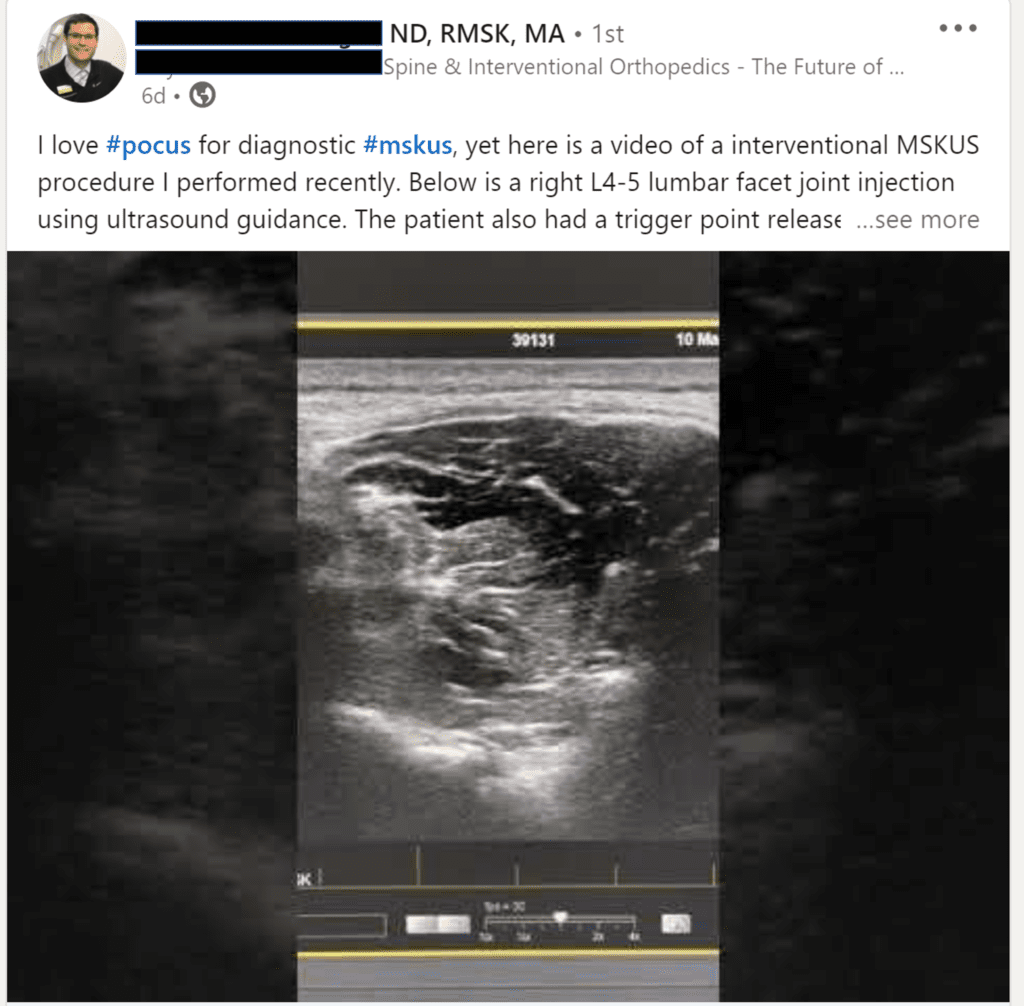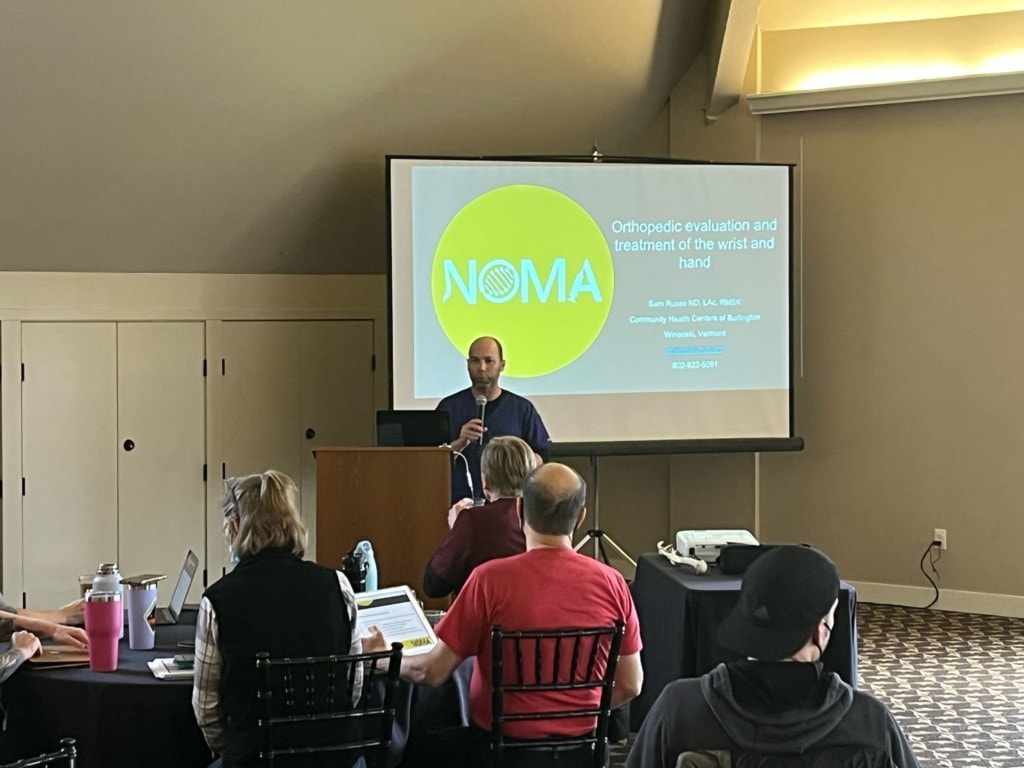The Case For and Against Midlevels in Interventional Orthobiologics

Credit: Shutterstock
There’s a debate raging in interventional orthobiologics that’s just below the surface and starting to boil over into everyone’s reality. Should midlevels be using these techniques to treat patients? Is this ethical? Right? Wrong? Good? Bad? Let’s dig in.
What is Midlevel?
A midlevel is a physician extender. The category includes both physician assistants (PAs) and nurse practitioners. While physicians these days must go through 4 years of college, 4 years of medical school, 4 years of residency training, and often additional fellowship training, midlevels can be minted and ready to see patients in half that time or less. Meaning that after a 4-year college degree and a 3-year training program a mid-level can see patients.
Because midlevels are considered physician extenders, they often are forced by state laws to work with physicians on-site or that can be easily reached. The goal is to ensure that they can bounce complex cases off these physicians who can provide direction. However, some states allow more autonomy than others.
Midlevels have become increasingly popular in the age of managed care and lower insurance payments. In high-volume clinics where physicians are forced to see double the patient load they did a few decades ago, they’re invaluable in helping doctors keep up. In addition, midlevel boards have continuously argued that they need more autonomy in order to fill physician slots in rural areas. However, despite this argument, most midlevels practice in the same places that physicians congregate, in the cities that have more than enough medical coverage.
Alternative Health Mid-levels
Another category that is often ignored when these debates rage is an alternative health practitioner with an expanded access scope of practice. When it comes to injection-based therapies, these providers often act similar to PAs and NPs. Let’s dig in.
Naturopathic doctors have about as much training as your average physician assistant. That’s a four-year degree and four years of training. However, in my experience, these providers are even less trained when it comes to recognizing or handling really sick patients. That’s because they usually don’t train in large university hospitals like medical providers, but instead in outpatient clinics where the patients are more the “worried well” than the super-sick. This big difference creates a chasm in knowledge about what to do when the proverbial sh%$ hits the fan.
What is Interventional Orthobiologics?
Interventional orthobiologics (IO) is the use of precise imaging guidance to place substances in various parts of the neuromusculoskeletal system that require help with healing or pain reduction. These increasingly complex procedures require the use of c-arm fluoroscopy (real-time x-ray) and/or ultrasound imaging. These procedures can span the gamut from simple intra-articular injections to very complex procedures around nerves. This is also called “interventional orthopedics”, so to learn more see my video below:
IO is not something practiced by the average orthopedic surgeon or family doctor but is becoming an increasingly complex medical specialty all to itself, similar to orthopedic surgery. The closest analog is interventional cardiology which is a specialty that also uses imaging guidance to replace more invasive cardiothoracic surgery.
Midlevels and Interventional Orthobiologics
These past 5-10 years, we’ve seen the rise of clinics offering simple orthobiologic procedures that use midlevels almost exclusively. These clinics are often owned by nonphysicians and frankly, their use of midlevels is based on a financial model. Lesser trained midlevel providers are much cheaper than physician specialists who are trained in interventional orthobiologics. For example, the average midlevel makes between 100-150K annually working in this type of clinic setting while a fully trained and experienced IO physician will command 250-450K annually. Hence, it doesn’t take a math wizard to see that if you staff your clinic with lesser trained midlevels, you can dramatically increase clinic earnings.
The Controversy
The financial argument for the use of more midlevels is that since they are less expensive than physicians, they can deliver care more inexpensively. However, that usually isn’t the case in orthobiologic clinics that charge cash. In fact, from what we have observed since many of these clinics use high-pressure sales tactics to push the most expensive procedure type the patient can afford, the care is often more expensive and of lower quality (due to less complex procedures) than the local physician specialist clinic.
In addition, the legality of midlevels performing anything more complex than a simple joint injection is very fuzzy. For example, is it within the scope of practice for a midlevel to perform a bone marrow aspiration? Most that I have spoken to wouldn’t feel comfortable and there is likely significant malpractice risk if things were to go awry. How about complex fluoro-guided spine procedures? Most established groups that teach and certify these procedures won’t accept midlevels for training. Or complex joint procures like the precise injection of a damaged knee ACL? The Interventional Orthobiologics Foundation won’t accept midlevels into these courses either.
Examples of Midlevels Being Used in Interventional Orthobiologics
Let’s dive into an actual real-life example of a clinic system that extensively uses mid-levels. These clinics all go by the moniker QC Kinetix, which is a group that I investigated last year. This was founded by a physician assistant and has clinics that are 95% owned by non-physician investors that are staffed by midlevels. For some procedures, physicians are brought in, but the initial evaluation, based on my research, is performed by a non-physician midlevel. That patient is then turned over to a professional salesperson. Again, from my interview of a patient who was a midlevel himself, that person’s job seems to be to upsell the patient to the most expensive package that is clinically relevant. When we have compared prices for what QC Kinetix offers versus clinics staffed 100% by much higher trained physician specialists, the QC Kinetix price is often higher.
Another place midlevels are being used in interventional orthobiologics is in orthopedic surgery and pain management practices. These settings are often high-volume clinics where the expectation is that 20-40 patients are seen each day. As an example, since orthopedic surgeons want to spend as much time in the operating room as humanly possible, they often use midlevels to run their clinics. Many orthopedic surgeons are unaware of the increasing complexity of interventional orthobiologic procedures, so they often use their midlevels to perform simple procedures like PRP injections in the knee, hip, or shoulder.
Training Midlevels
As you may or may not know, a little less than a decade ago I founded the Interventional Orthopedics Foundation which morphed over time to be the Interventional Orthobiologics Foundation. After 4 years or so of getting that up and running, I backed off of the leadership role and handed it to other capable physicians so it could pursue its own course. IOF has thus far refused to train midlevels. Let’s explore why.
Examples of Midlevel Training Causing Bad Outcomes
As an expert in this field and the first human on earth to perform many of these IO procedures using platelet-rich plasma or stem cells, I have been increasingly asked to testify in cases where bad actors are doing bad things. Hence, from a legal standpoint, I’m privy to all sorts of problems in the stem cell wild west that may or may not have made it into the press.
One of the things I consistently see in cases where I’m asked to consult are the problems created by poorly or lesser trained midlevels harming patients. In all of these cases, the problem, whether a midlevel is involved or not, is that the providers bit off more than they could chew and didn’t know enough to recognize that they were harming someone. Let me give you some concrete examples (I will keep the names and exact details out of this as these as many of these cases are in active litigation):
- An elderly gentleman whose knee became infected when injected with a fake umbilical cord “stem cell” product by a midlevel in a chiropractic office. Since the midlevel was the traveling sort, she was never involved in the follow-up care, which is inappropriate. The chiropractor who was left to follow up on this disaster completely missed a severe knee infection that morphed into renal failure. Basically, this old man would have likely died if not for his retired nurse spouse who recognized the issue and bypassed the clinic to bring him into the emergency room.
- A naturopath who decided to teach chiropractors an intrathecal “stem cell” injection and then made videos about it. That injection using a local anesthetic was so close to being fatal that I got involved and am now a witness for the state seeking to impact his license. In my opinion, this situation is so dangerous as to warrant license revocation.
I continue to see increasing evidence of midlevels, not satisfied with simple peripheral joint injections, who are taking up more complex and potentially dangerous image-guided spinal injection procedures without adequate training. The same thing is happening with complex peripheral joint procedures. Do you want concrete evidence?
Here is a post from Linkedin by a naturopath who is injecting the neuraxis (facet joints in the spine) in Oregon. What’s interesting is that based on my understanding of the Oregon naturopathic practice act, this procedure is not legally permitted:

Here is a course where naturopaths are learning interventional orthobiologics of the peripheral joints:

Hold that Line
When I was a kid, my mother made something called a “Raisin Cookie Sheet”. The story was that her mother made raisin pies before the start of the depression, but with many mouths to feed and money scarce, that pie got placed into a big rectangular cookie sheet.
In the afternoon, when we got home from school we would all get a small piece with the main desert served at dinner. She would tell us all not to eat any of the raisin cookie sheet while we waited, but we all played a game we eventually called “hold that line”. Each of her seven kids would surreptitiously cut a small line off the end of the raisin cookie sheet when she wasn’t looking. It wasn’t much, just a straight quarter or half-inch so that she wouldn’t notice. The problem is of course, that after 7 kids had done this once or twice, half of the raisin cookie sheet was gone by dinner!
This is very much what happens with midlevel scope of practice expansion. Each move is small, but the long-term effects are huge and not in the patient’s best interest. For example, since mid-levels already inject steroids into the knee joint, why not PRP? Since they mostly do that blind, why not teach them ultrasound? Given that they already do that, why not ligaments? Well if they’re injecting specific structures, why not use x-ray guidance to inject the ACL or PCL?
Or take the spine. What would be the harm of having a midlevel inject muscle trigger points in the spine? If they’re doing that, why not ligaments? Well, if they can inject ligaments, why not facet joints using ultrasound? Well if they go that far, how much harder is it to perform a simple caudal epidural. Or how much further is it to use fluoroscopy to inject the disc? If they’re already there, why not put in simple implants?
You get the picture. Each move is small, like our game of “hold that line”, but the overall impact over time is huge. Somewhere in there, midlevels transition into truly dangerous things to do without the training needed to easily identify complications or to manage the patient successfully when things go bad. Meaning at some point half the raisin cookie sheet is gone and mom’s pissed.
Investigational vs. Standard of Care
You also can’t have this discussion without mentioning that much of interventional orthobiologics is still investigational. So while groups like the Interventional Orthobiologics Foundation are working hard to define the standard of care, there is no widely accepted standard right now like there is for the rest of medicine. That’s a problem because the entire standard of mid-level training is based upon that firm bedrock of tried and tested procedures that are standard of care. Meaning in no other area of medicine are mid-levels delivering investigational procedures without a care standard and outside of a clinical trial.
Conclusions?
As one of the founders of the field of interventional orthobiologics do I think that we should allow midlevels to practice these increasingly complex procedures? NO. Why?
While a cogent case can be made to allow midlevels to use simple PRP injections, my direct experience has taught me that over time, that line will move farther and farther down the road. At some point, another line called “safety” will be crossed and there is no way to push that line backward once it’s crossed. The field will just become known as “unsafe” and will suffer accordingly.
There’s another problem. Just think about what would have happened if mid-levels were permitted to perform interventional cardiology procedures. How would that field be dramatically different today? Would it have become the dominant cardiac procedural specialty? Would we have seen as much innovation? My guess is that the answer to both of these questions is a resounding, “No”!
Colleague Pushback
Many of my colleagues run high-volume practices. As a result, they employ midlevels. They want to use these providers to perform procedures that earn money for the clinic and one of these is invariably going to be simple interventional orthobiologics. Hiring a specialist physician to do this will cost 3-4X as much, so they won’t do that. I’ve spoken to many of these doctors and the idea that interventional orthobiologics would be closed off to their midlevel providers frankly upsets them.
Organizations have the same issue. Many barely survived during COVID due to face-to-face courses being shutdown. They also want to train midlevels. Some are grappling with the idea that training for IO procedures should be restricted to appropriately trained physician specialists.
In fact, the only group who won’t be upset by my position on this issue will be the one that matters most. When given a choice, just about every patient I have ever seen wants to see the best-qualified specialist they can afford and that’s rarely a mid-level with a fraction of the training.
The upshot? Adding mid-levels into interventional orthobiologics is a net negative in my opinion. It’s also time to stop playing the “hold that line” game with mid-level scope of practice as that erodes patient safety and the quality of care. That will also eventually damage the field.

If you have questions or comments about this blog post, please email us at [email protected]
NOTE: This blog post provides general information to help the reader better understand regenerative medicine, musculoskeletal health, and related subjects. All content provided in this blog, website, or any linked materials, including text, graphics, images, patient profiles, outcomes, and information, are not intended and should not be considered or used as a substitute for medical advice, diagnosis, or treatment. Please always consult with a professional and certified healthcare provider to discuss if a treatment is right for you.